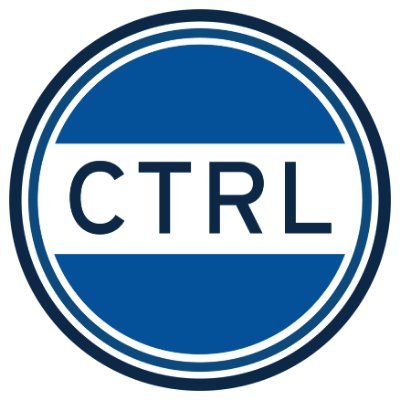Chasing Stars
How Gamification Changed My Classroom
By Evan Reister
Fall 2025
I never thought a wobbly, hand-drawn star could hold so much power. But this past semester, it became the symbol of something surprisingly meaningful in my HLTH 325: Exercise Physiology course—engagement, connection, and, believe it or not, a genuine desire to learn. I introduced a star-earning system mostly as a playful way to avoid end-of-class quizzes, but it quickly turned into something more. Students weren’t just chasing points—they were chasing stars. And along the way, they became more attentive, more collaborative, and maybe even a little more excited to show up and participate in a Wednesday evening class. This is the story of how something so simple turned into something that changed the way we learned together.
The star-earning system
In the 2024–2025 academic year, I introduced a simple system: If the class earned enough stars, they could skip that day’s quiz. My goals were threefold—to boost engagement, strengthen class unity, and deepen understanding of course concepts. Rather than tracking individual performance, students worked together to earn stars collectively. Managing individual rewards would’ve been too complicated, and I wanted to emphasize a shared sense of purpose. It sounds almost too basic, but the impact was significant.
Here are a few ways students could earn stars:
- Correct answers: Sometimes, I’d ask a question and award a star if 50%, 75%, or 100% of the class got it right. Other times, a group of three or four students would be responsible for answering a question correctly and earning a star for the class. These questions were always clear-cut, with only one correct answer. Occasionally, students had to generate the answer themselves; other times, the question included multiple-choice options.
Example: If I have 3 liters of plasma and 2 liters of formed elements, what is my hematocrit?
- Critical thinking: Certain questions required students to take what they had learned and apply it in a new way. In these cases, students could collaborate, build on each other’s ideas, and work toward an evidence-based solution. I awarded stars if they reached a well-supported answer—even if multiple correct answers were possible.
Example: With a partner, create a diet plan for an athlete for the day before their 50-mile race.
- On-task behavior: These were basically “gimme” stars—earned when students demonstrated productive, focused collaboration. While somewhat subjective, the expectations were clear: stay engaged, avoid side conversations unrelated to class, and ensure every group member participated. When students worked cohesively and remained on task, they could count on earning a star as recognition for their effort and teamwork.
Example: Your group is assigned a type of resistance training. You’ll have 15 minutes to research and build a convincing case for why your training type is the best. Then, we’ll hold a short debate where each group presents their argument.
- Generating questions: When I ask, “Any questions?”, I’m often met with silence—even though I know students are curious and/or confused. To encourage deeper thinking, I occasionally paused the lesson and asked groups to generate their own questions. If they collectively came up with at least three thoughtful, relevant questions, they earned a star.
Example: Talk with your group and come up with a question about energy expenditure.
- Class participation: Getting full participation in activities that break from lecture can be challenging. To encourage engagement, I used tools like Mentimeter for anonymous submissions. Students earned a star when every member of the class—or every group—submitted a response.
Example: How can we increase opportunities for physical activity among AU students with disabilities? Discuss with your group, create a list of five strategies, and submit them through Mentimeter.
- Class discussion: Some days, it took three students speaking up on a specific topic. Other days, everyone had to say something. But if they hit the target, they earned a star.
Example: The BMI is a flawed measurement. Let’s hear from at least three students as to why this might be the case.
Each day, the class could earn between 8 and 15 stars. If they reached the threshold I set, which was usually one or two stars below the total amount of stars for that day, I’d cancel the quiz. As you might imagine, they were pretty excited about that.
What students thought
I developed the star-earning system as part of my work as a Scholarship of Teaching & Learning (SoTL) Faculty Fellow at CTRL. I’ve always been intrigued by gamification, and thankfully, this fellowship enabled me to create a research project based on this interest. As part of the project, I surveyed the entire class at the end of the semester, as well as interviewed four students.
In the survey, I asked students to weigh in on the star-earning system. Out of 12 students:
- 10 students strongly agreed that they enjoyed the use of gamification; 2 students somewhat agreed.
- 10 students strongly agreed that it helped capture their attention; 2 students somewhat agreed.
- 8 students strongly agreed that it helped them apply course concepts to real-life scenarios; 4 students somewhat agreed.
- And when asked in an open-ended question if it enhanced their learning experience, 9 students specifically mentioned that it helped them stay engaged or pay attention.
One student put it perfectly in my interview with them: “There were points where I was taking notes extensively and maybe not listening as much as I should have been … then the gamification came up and I got picked, and I was like ‘I need to really pay attention.’ So, it kind of altered the way I approached the class and took notes.”
The pros and cons
Like every new venture in the classroom, there were clear pros and cons. Here were a few I picked up on along the way:
Pros of star-earning
- Unified the class: Students were working together toward a shared goal, and it showed. As one student said in an interview, “I think it was just kind of fun, and it was a nice way for such a small class size to kind of bond a little bit.” Another added, “The gamification … you very much do interact with everyone in the class at some point, which is really nice.”
- Boosted attention and engagement: It’s hard to zone out when stars are on the line. The students never knew when a star-earning opportunity might pop up, so they had to stay alert and ready. There was no penalty for missing out—just a reward for earning stars—so the pressure created a kind of “productive” anxiety. I also made sure the criteria for earning stars varied slightly each week, which kept things fresh and exciting.
- Highlighted key concepts: The star-earning activities often centered around the day’s most important content. The students knew that the star-earning questions served as a study guide for the exams.
Cons of star-earning
- No one ever took a quiz: Technically, this block-format course was supposed to end each class with a 10-point open-note quiz. But in practice, I never actually gave one. That could be a good or bad thing, depending on how you look at it. The students definitely viewed it as a good thing. Even though they never took a quiz in class, I always added the quiz questions and answers to Canvas afterwards. This practice allowed students to use the quizzes to help them study for the exams.
- Instructor workload: Creating meaningful, game-like activities takes time. It’s worth it, but it’s a lift.
- Not for everyone: Some instructors (and students) may find gamification to be a distraction or just not their style. Based on the survey I administered, every student at least somewhat enjoyed the use of gamification in the course, but I know this wouldn’t always be the case.
Lessons I learned along the way
- Students find joy in weird things. I drew stars on the whiteboard every time students earned one. I am not an artist. My stars were wobbly and uneven—and students loved them. One student even said their favorite part of class was watching me try (and fail) to draw symmetrical stars. The one day my wife guest lectured and drew perfect stars? I heard about it for weeks afterward from my students.

My best attempts at drawing stars. I’ll say it again: I am not an artist.
- It’s okay to pivot when something doesn’t work. Early in the semester, I tried spinning an online wheel to randomly pick students to answer questions for a star. I thought it’d add suspense and maybe encourage volunteers. It did not. It only added anxiety. After a couple weeks of watching students panic every time the wheel spun, I scrapped it.
- It wasn’t just fun—it helped students learn. Multiple students mentioned that the format helped them understand the content better during class, not just when cramming before a test. As one student said in an interview, “When I was leaving the class after the gamification, I knew in my head that I could answer the questions we had solved as a group. I can’t say that about all my other classes.”
Gamification made learning a little more playful, a little more collaborative, and a lot more fun.
Gamification may not be magic, and it may not work for every class or every instructor. But for me—and my HLTH 325 students—it made learning a little more playful, a little more collaborative, and a lot more fun.
And if it meant fewer quizzes? Well, that was just the cherry on top.
Author Profile
Evan Reister, PhD is a Professorial Lecturer in the Department of Health Studies. His main appointment is in the Master of Science in Nutrition Education program, although he occasionally teaches Health Studies undergraduate courses. As a CTRL SoTL Fellow, he developed the star-earning system for his research project on gamification.
References and Further Reading
An, Y. (2020). Designing Effective Gamified Learning Experiences. International Journal of Technology in Education, 3(2), 62–69.
Christopoulos, A., and Mystakidis, S. (2023). Gamification in education. Encyclopedia, 3(4), 1223–1243.
Majuri, J., Koivisto, J., and Hamari, J. (2018). Gamification of education and learning: A review of empirical literature. GamiFIN, 11–19.



